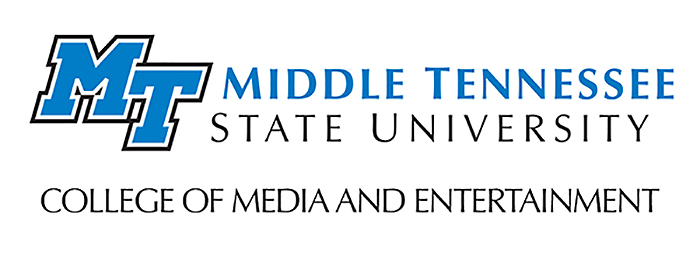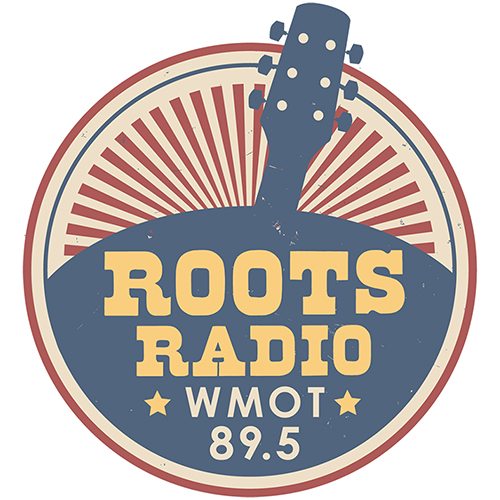MANCHESTER, Tenn. — The nondescript set of white tents and port-a-potties that make up the media compound at the Bonnaroo Music and Arts Festival seem dull compared to the rest of the event’s 700-acre farm.
Yet inside these tents, students from Middle Tennessee State University’s College of Media and Entertainment covering Bonnaroo are having a great time and working hard, delivering content on a surprising number of platforms — including terrestrial radio.

Val Hoeppner
MTSU’s low-watt, but high-spirit, student radio station, WMTS, joined its big sister, the 100,000-watt Americana public radio giant WMOT Roots Radio, in working from Radio Roo, the makeshift set of broadcast studios set up for live broadcasts and reporters working on taped packages.
It’s the second year that WMOT has broadcast from Bonnaroo, but WMTS has been a frequent visitor to the farm. But this year’s appearance by WMTS includes a new push for real-time digital coverage, as well as taped packages for later broadcast.
On the air since 1996 and at 88.3 on the FM dial, the student station has a limited broadcast reach – only in the city of Murfreesboro on air – but has found a home on WMOT’s third HD channel and can also be heard via livestream on its website, wmts.org. New this year, however, is that WMTS has moved from the status of a student club to part of the academic programs within the college, which means it will get more MTSU support and resources.
 “Bonnaroo is a fantastic experience for our student radio team at WMTS. They learn to create vibrant content for both the web and on air,” said Val Hoeppner, director of MTSU’s Center for Innovation in Media, which houses both WMTS and WMOT. “While they don’t have the ability to be live on the radio, they offer their audience a unique look into festival culture through mobile and social stories.”
“Bonnaroo is a fantastic experience for our student radio team at WMTS. They learn to create vibrant content for both the web and on air,” said Val Hoeppner, director of MTSU’s Center for Innovation in Media, which houses both WMTS and WMOT. “While they don’t have the ability to be live on the radio, they offer their audience a unique look into festival culture through mobile and social stories.”
WMTS, Hoeppner said, will bring Bonnaroo culture to listeners in Murfreesboro through interviews and news pieces throughout the festival. “This year WMTS is working hard to reach their audience on their website through photo galleries, quick interview clips and festival news,” she said.

Jared Corder, left, front man for the band *repeat repeat from Nashville, Tenn., is interviewed Friday, June 8, by Brooke Funkhouser, a junior in media management working for MTSU’s student radio station, WMTS, at Radio Roo, the studios at the 2018 Bonnaroo Music and Arts Festival in Manchester, Tenn. (WTMS photo by Anthony L. Williams II)
Meanwhile, WMOT, which has grown from 44th in the Nashville market to 25th thanks to the change to Americana format in 2016, is broadcasting live from Radio Roo with artist interviews, festival news and happenings. Program director Jessie Scott and Hoeppner had live interviews and music during Scott’s afternoon drive-time show Thursday and Friday. On Saturday and Sunday, Scott and morning host Whit Hubner will broadcast during the afternoon.
“WMOT is always looking for ways to promote Americana artists and serve our community,” Hoeppner said. “Our broadcasts from Bonnaroo allow our listeners to experience the festival through the eyes of Americana artists performing at one of the best festivals in the country.”
Meanwhile, one tent over from Radio Roo, the eight student journalists that make up this year’s MTSU Seigenthaler News Service team at Bonnaroo, were pounding laptops and uploading photos and videos for media clients who hired them to cover the festival.
It marks the fifth straight summer that the Seigenthaler News Service, named in honor of MTSU’s legendary First Amendment activist and former Tennessean editor and publisher John Seigenthaler, has offered up coverage of Bonnaroo.

Val Hoeppner, left, and Jessie Scott of WMOT Roots Radio, the Americana public radio station at Middle Tennessee State University, broadcasting live Friday, June 8, at the 2018 Bonnaroo Music and Arts Festival in Manchester, Tenn. (MTSU photo by Andrew Oppmann)
Last year, MTSU students filed more than 30 bylined reports, along with 16 sets of photos and any number of social media posts, for media partners The Tennessean and its USA TODAY NETWORK affiliates, as well as the digital entertainment guide NowPlayingNashville.com, an initiative of The Community Foundation of Middle Tennessee.
 “Covering a music and arts festival often means late-night hours followed by early morning deadlines, which is fabulous real-world experience for the students,” said Pat Embry, an adjunct professor and former journalist who returned to again help MTSU coordinate its Bonnaroo operations.
“Covering a music and arts festival often means late-night hours followed by early morning deadlines, which is fabulous real-world experience for the students,” said Pat Embry, an adjunct professor and former journalist who returned to again help MTSU coordinate its Bonnaroo operations.
“Sleep can be a scarce commodity for the average working journalist.”

Leon Alligood
One such sleep-deprived student was Andrew Wigdor, a multimedia journalism senior whose overnight coverage of Bonnaroo ran on The Tennessean’s website.
“The night life at Bonnaroo has really exploded this year, with so many new opportunities in the campgrounds, so it was awesome to be able to cover all of it first hand,” Wigdor said.

Helping keep students like Wigdor on focus and on task is Leon Alligood, a former Tennessean reporter turned associate professor in MTSU’s School of Journalism and Strategic Media. “Working at Bonnaroo puts our students in a real world, real deadline situation,” he said.
“Getting them out of the classroom so they can put into practice what they’ve been taught in the classroom is a valuable experience.”
For previous coverage of MTSU’s presence at Bonnaroo, go to http://mtsunews.com/mtsu-at-bonnaroo/.
— Andrew Oppmann (andrew.oppmann@mtsu.edu)

Melissa Summitt, a senior majoring in music business working for MTSU’s student radio station, WMTS, edits sound in Radio Roo on Friday, June 8, at the 2018 Bonnaroo Music and Arts Festival in Manchester, Tenn. (MTSU photo by Andrew Oppmann)

COMMENTS ARE OFF THIS POST